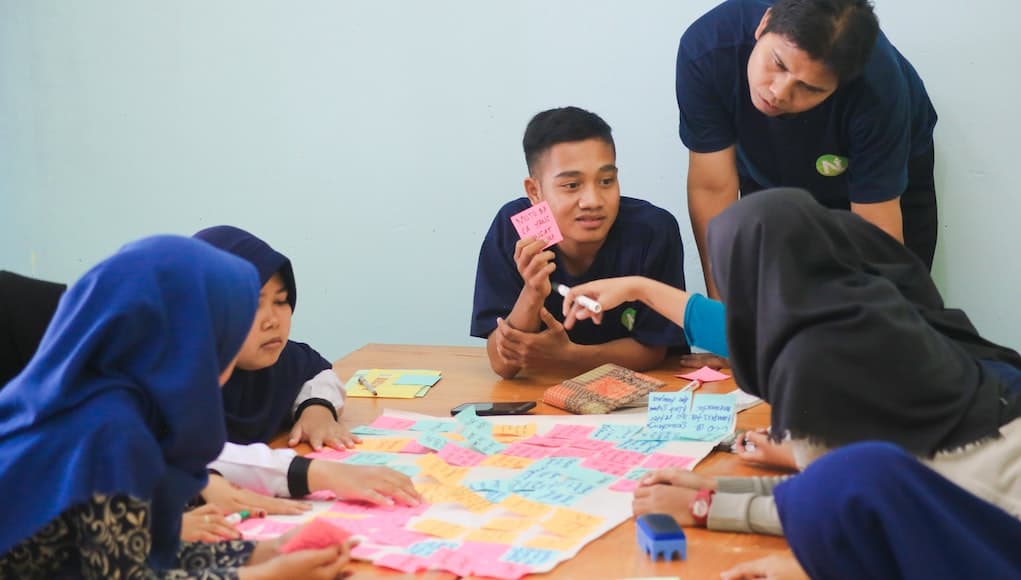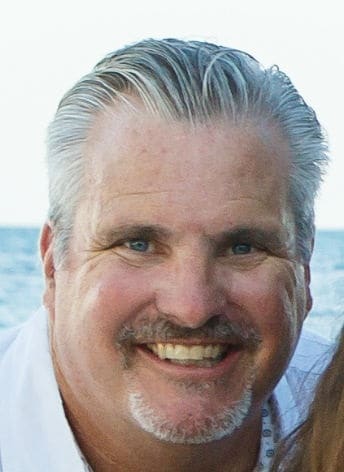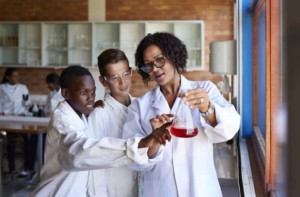Student Leadership: The Ultimate Course for Career and Life Readiness

As a high school teacher, I learned early on that teaching electives had huge advantages. One, students chose to be there so there was a distinctly different mindset. The other was from the instructional vantage point. It seemed that electives offered the teacher all of the things that great teaching and learning should have: freedom, creativity, customization, personalization, and relevance.
I was fortunate to teach several media electives and enjoyed them immensely. In what turned out to be the middle of my career, I was challenged with teaching a Leadership class. The intersection between me, my students, the school, and the community was a perfect storm. Although it’s been more than 15 years since I taught this course, I still reflect on the experience almost daily. I didn’t realize it then, but now I think this might have been the complete course to prepare students for college, career, and life in a project-focused, globalized and collaborative world. This is why:
Real-World Problem Solving
As I started this new position, I learned that the school had recently undergone some racial tensions involving a high profile white supremacist group that ultimately produced an investigation from the Federal Office of Civil Rights. I was charged with the mission of promoting tolerance, or beyond, with all students on campus. In a move that would represent the best of my teaching intuition going forward, I immediately posed the challenge to my students.
The Harmony Diversity Talent Show was born. The students conceived, created and implemented a new special inclusion-focused show that would feature stomp from the African-American Club, traditional Hmong Dancing from the Asian-American Club, folk dancing from the Armenian Student Organization, the Latin Dancers, and even an Irish Folk Dance along with teams of students partnering with special needs student performances.
The school went from having an Office of Civil Rights investigation to winning awards from the National Organization of Students with Disabilities and the National Association of Secondary School Principals. More importantly, these student leaders had demonstrated to the school and community that their diverse student body was talented, creative, powerful, and proud when united.
Other examples included what we dubbed School Improvement Projects whereby students had to identify a school-wide issue or challenge and work to address it in a creative way. This project alone birthed hundreds of public products such as a 9-11 memorial, art hops, student recognition programs, teacher and staff recognition programs, staff memorials, a special needs cheer program, school beautification projects, a CD of student bands and musical artists and so much more.
Service Education
More than anything, service education became my leadership classes’ primary mode of operations. What started as some on-campus outreach for your standard service or volunteer-type projects (food collection, money collection, etc.) soon became creating school events with the explicit design of raising both money and awareness for several community causes. Students created the Ambiance Fashion Show as a benefit for our local children’s hospital, a three-day blood drive for our regional blood centers, and a prom for a local boys’ group home. Eventually, they had several events that featured student performances and more that partnered with local hospice organizations, children’s groups, and dozens of non-profit organizations. They created Community Service Saturdays that would dispatch student teams, with student recruits from across the school spectrum, to several projects around the community focused on cleanup, planting trees, feeding the less fortunate, and more. They literally turned every traditional school event – rallies, games, dances – into opportunities to raise funds and awareness for someone or something in the community. Students not only transformed themselves but their entire school community and the public as well.
They learned skills and had experiences that would inform their future education and career choices while giving them a personal and collective mission for a lifetime. After graduation and a diverse set of higher education and career choices, they moved all over the country while starting new non-profits, socially-minded business ventures, new community collaboratives, social media campaigns, and service opportunities for their co-workers and colleagues. I experienced in real-time how the newer generations of young people are way more socially engaged than the generation of many of their teachers.
Larger Mission: Something For Every Someone
One of the primary and foundational challenges that I set for all of the leadership students – that they wholeheartedly accepted – was the ongoing mission to reach out personally to every student on campus in a meaningful way. Our goal was to offer some co-curricular or extra-curricular experience for each student.
This mission took on many forms. We had an annual Car Show that included and featured many students who had not connected to or bought into much of what the school traditionally offered. At lunch, we had a Guest DJ Program where students could sign-up and be DJ for a day. There, they got to play their music – hard rock, speed metal, punk, country, techno – for that day’s lunchtime music. This soon became a great way to honor students’ voices and make them feel that they mattered, their opinion or personal taste counted, and that they could have a schoolwide voice.
We brought in lunchtime guest speakers based on student interest – skating pros, surfing experts, chefs, beauty tips and you name it. Each Leadership student also had a caseload of students that they were charged with reaching out to, checking in with, and generally communicating to about opportunities catered to them.
Easily Replicated
Most high schools and middle schools in our country have some type of leadership class. All of the above is easily replicated. In too many cases, this is just a class that hosts dances and promotes school spirit. There is nothing inherently wrong with that. However, our students are capable of so much more. As educators, we should be turning every school challenge that we see over to them. Whether it’s school culture, safety, academics, or anything you can imagine, let’s invite our students to take them on as part of a project-based approach. Not only will our students surprise and amaze us, but we will also reap the benefits of a better school, community, and world.
To see some of the impacts that the leadership experience had on students long-term, feel free to take a look at these Student Testimonials.
For more, see:
- Culminating Passions: Student Leadership for School-Wide Change
- Where High School Starts with Leadership and Design Thinking
- Building Student Civic Engagement through Sustainability Education
Stay in-the-know with innovations in learning by signing up for the weekly Smart Update.







Leaders of Evolution
Thank you for the good information that many people will benefit from. We at Leaders of Evolution provide student leadership courses. Keep up the good job of informing the audience.